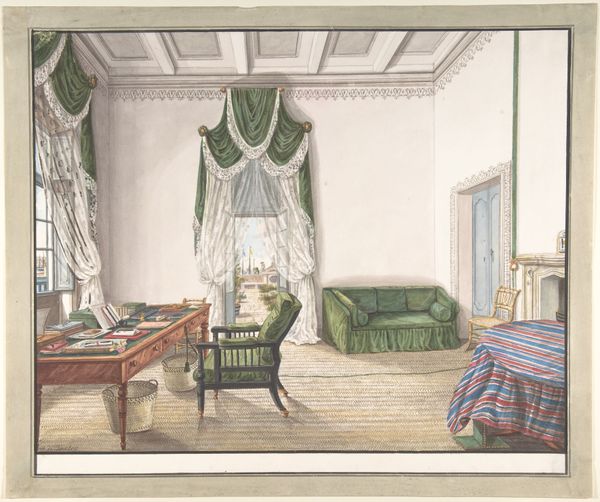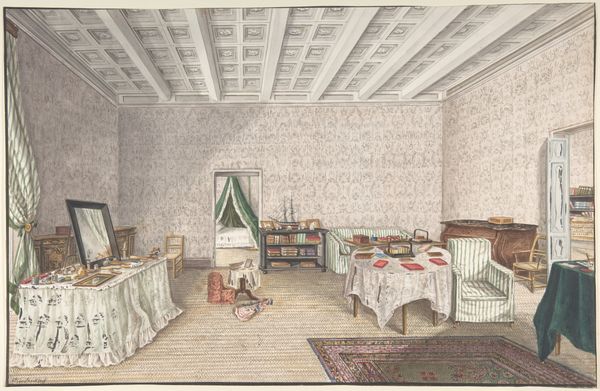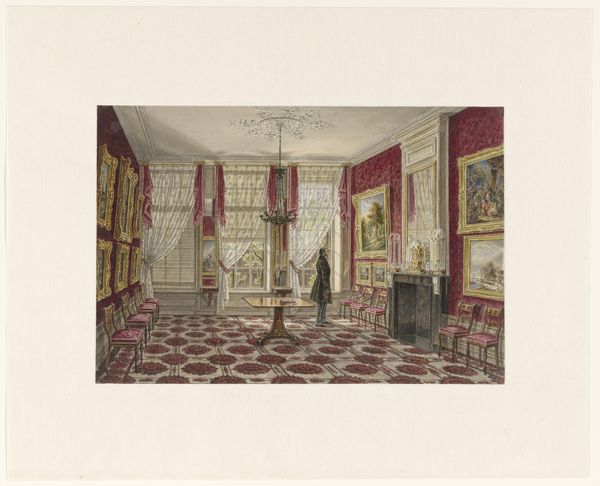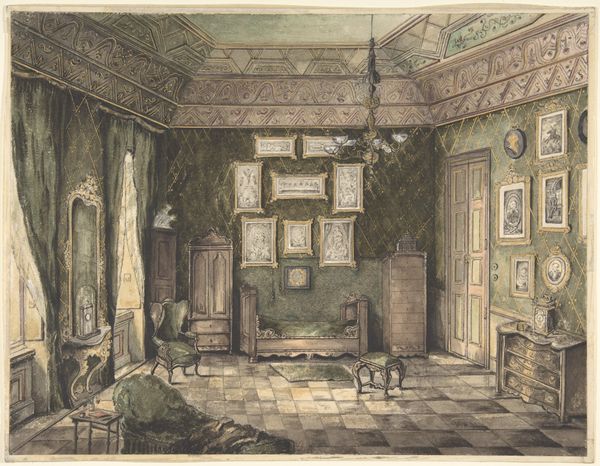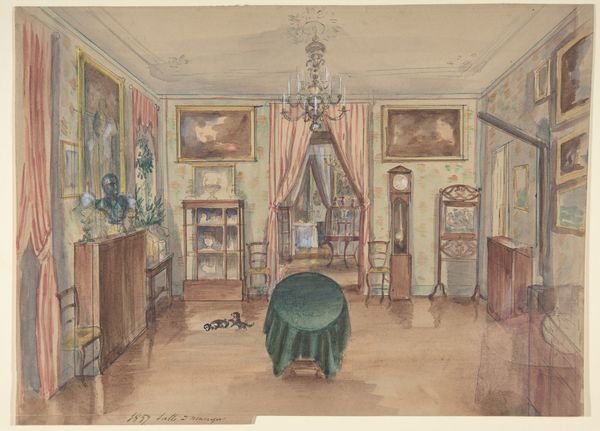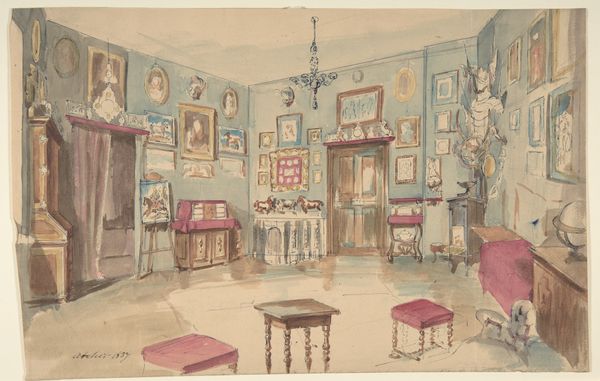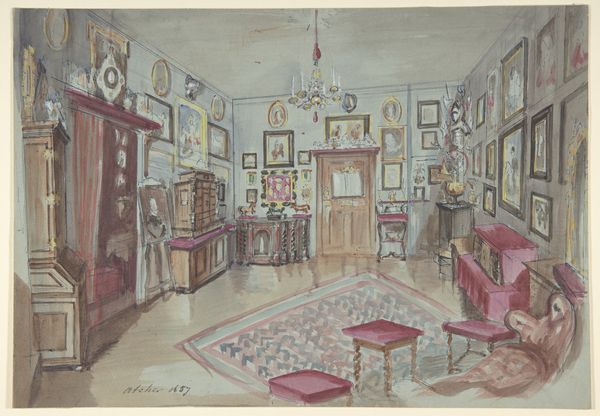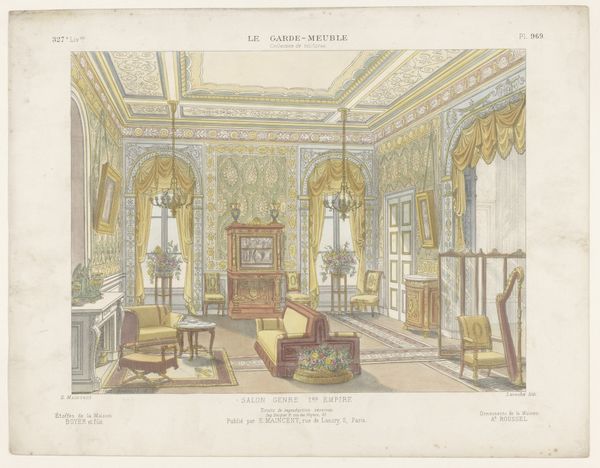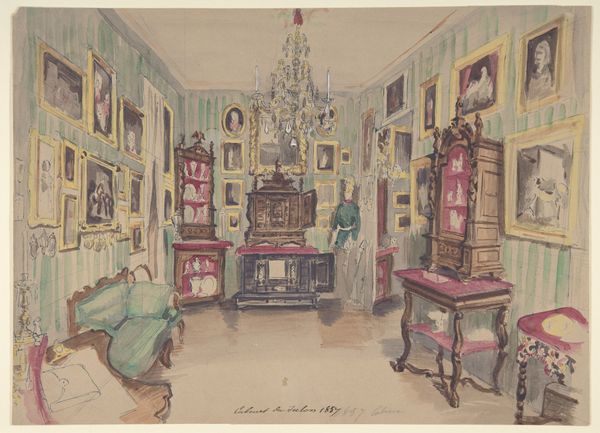
drawing, print
#
interior architecture
#
drawing
#
table
#
neoclacissism
# print
Dimensions: sheet: 14 1/4 x 19 in. (36.2 x 48.3 cm)
Copyright: Public Domain
Editor: Here we have Charles de Brocktorff’s "Design for interior", dating from 1825 to 1835. It’s a drawing and print, currently housed at the Metropolitan Museum of Art. The cool palette gives this Neoclassical interior a rather serene feeling. What do you see in this piece, especially considering it’s just a design? Curator: Ah, yes. A design it may be, but it resonates deeply with cultural aspirations and the emotional landscape of its time. Note the columns – clear symbols of classical learning and power, harkening back to the perceived glories of the ancient world. Their presence isn’t merely decorative; it's a visual declaration of sophistication and learnedness, isn't it? Editor: It certainly seems that way. I noticed the almost theatrical drapery and symmetry; does that suggest something as well? Curator: Indeed. Draping can represent status and taste, but beyond wealth, consider how drapery shapes perceptions. Covering parts of the architecture gives off different cultural signals. Here it gives the appearance of opulence and alludes to privacy and comfort. These curated interiors offered psychological and social roles to inhabitants and viewers. Editor: So the objects aren’t just “things”, but indicators of identity? Curator: Precisely. This isn’t merely a room; it’s a carefully constructed performance of self. The furniture, arrangement, the very light filtered through those windows all create a stage on which identity is performed, mirroring larger societal values and anxieties. Editor: That's a completely different way to think about interior design! Curator: The beauty of art lies in how symbols gain new layers of meaning over time. Reflecting on their impact offers powerful insights. Editor: This design reveals so much more than just aesthetic preferences. Thanks!
Comments
No comments
Be the first to comment and join the conversation on the ultimate creative platform.
